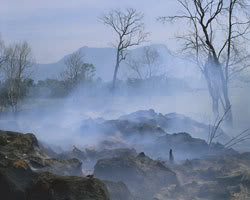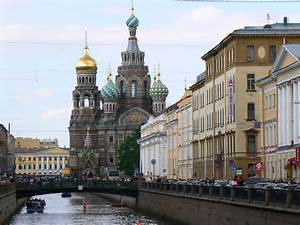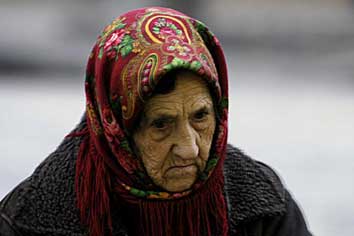
In 2013, when I e-mailed Leslie Ann Sartor about guest blogging, I said I'd write about St. Petersburg, the setting for my then-most-recent release All For Spilled Blood. "Great," she replied. "Setting is another character."
Absolutely! That stirred the juices, and I decided to blog on using your setting as a character in your novel.
SETTING OF THE NOVEL
Without place, the characters are just there without reason to act or care. Setting is not only the time, location, and circumstance of where the story takes place, but the social milieu which shapes values and the characters. Nathan Bransford sees three important traits in a novel:
● "Change Underway: The best settings are not static, unchanging places that have no impact on the characters' lives. Instead in the best worlds there is a plot inherent to the setting itself: a place in turmoil, or a place that is resisting change but there are tensions roiling the calm, or the sense of an era passing in favor of a new generation.
● "Personality and Values: A great setting has its own value system. Certain traits are ascendant, whether it's valor and honor, justice and order, every man for himself, or it could even be a place where normal values and perspectives have become skewed or inverted…There's a personality outlook that throws us off kilter and makes us imagine how we'd react if we were placed in that world."
● "Unfamiliarity: Most importantly, a great setting shows us something we've never seen before. Either it's a place that most readers might be unfamiliar with and have never traveled to, or it shows us a place that we are all-too-familiar with, but with a new, fresh perspective that makes us look again."
The setting may establish the mood of the novel, as well as serve as a character that helps the protagonist achieve his or her goals, or as the antagonist working against them [e.g. a novel where the protagonist's goal in climbing Mt. Everest and the setting does everything it can to prevent that with wind, falling rocks, breaking ropes, and so on].
So, your setting is definitely a character in your novel. Whether it's a primary or secondary character depends on the kind of novel and what the author wants. But choosing the correct setting is just as important as the other components of the novel. It can assist the reader to experience the drama and feel the moods and emotions of each particular scene, as well as the novel as a whole.
Sometimes settings are such that the story couldn't take place anywhere else because of the mood, physical features, social values and customs. Think about what makes your setting unique.
Author Susan Meissner writes: "We are wired to assign value to places. That's why home is so sweet, Yosemite is so beautiful, Paris is so romantic and a moonlit beech is so calming. It's also why dark houses scare us, crumbling cliffs intimidate us, and foggy moors depress us. Places communicate something to us. A spider doesn't care if it makes a web in the dark, musty cellar or under a chair in an opulent ballroom. But we care!""
While setting may not be the same as mood and atmosphere, the reader's emotional response to the time and place of the setting, each setting has its own unique mood and atmosphere. And the more familiar you are with the sense of place, the more you can use it to assist or hinder your protagonist, which will add depth to your novel.
Doing research in advance allows the author to pull those in as details that affect and further plot without stopping in the middle to look things up, or going back later to add them…and then forgetting to do that.
A few things to look at include: Weather and climate, slang and language, particularly if the setting is foreign, the appearance at different times of day and in different seasons. You may even want to find out of the location is on daylight savings time…and that's not just for the US settings. What places in the setting are particularly scary/dangerous and peaceful/safe, map and satellite pictures, topography and physical characteristics.
Susan Meissner also suggests, as part of your research, that you look at the location's newspaper on line and check out "real estate ads, the society page, obituaries, and the restaurant guide." You can get a good sense of what the city or town is like. Personally, I'd throw in reading the police blotter or equivalent, too.
I was intrigued by Author MaryLu Tyndall's list of six ways the setting can help or hinder the protagonist in achieving his/her goals in general and in a scene. It's worth the time to read her article. (See Resources) Here's a recap of her points.
● The setting as a friend / a comfortable, relaxing place where protagonist can reflect, or a safe place to hide from enemies.
● The setting as an antagonist / introduce conflict, trouble, thwarts protagonist's plans.
● The setting as a mentor / a place to learn or make discoveries, a place to prepare to take something on.
● The setting as a shadow for protagonist / a shadow reflects the deepest flaws of the character / a setting that opens the character's eyes to his/her own flaws.
● The setting as a model of what the protagonist wants to be / a setting that fosters qualities to which the protagonist aspires.
● The setting as an example/ a setting that either assists or hinders the character in the particular scene. There are important roles of the setting of each scene.
ST. PETERSBURG, RUSSIA
St. Petersburg is a beautiful city founded by Tzar Peter the Great in 1703. Although created to be as much like other contemporary European cities as possible, nothing is really old by European standards, and the buildings themselves take on some of the special expansive qualities typical of Russian architecture.
It’s impossible to walk more than a few hundred meters without crossing a bridge. The canals and the morning fog give the city a very romantic and picturesque mood, as do the white nights when the sun goes down at 1 am and the rest of the night is like twilight until the sun comes up at about 3:30 am.
The Russian people are integral to St. Petersburg as a setting. I found them friendly, helpful, and often outgoing … but serious. Yes, they do laugh and smile, and they know how to have a good time, but in the shopping center or along the streets, most of them seemed to go about their business with unsmiling intense expressions, as though they take life very seriously. The older ones rarely step out of the box of their responsibility, seemingly conditioning from prior times.
□
References
http://en.wikipedia.org/wiki/Setting_%28narrative%29
http://www.rachellegardner.com/2012/06/using-setting-as-a-character-a-tip-for-novelists/
http://www.novelrocket.com/2011/10/make-your-setting-character-by-susan.html
http://www.julieleto.com/articles/where-am-i-the-importance-of-setting-to-your-romance-novel/
http://www.scribophile.com/blog/importance-of-setting-in-a-novel/
http://leaguewriters.blogspot.com/2010/05/making-of-world.html
http://blog.nathanbransford.com/2010/05/what-makes-great-setting.html
http://www.saint-petersburg.com/photo/index.asp\













 RSS Feed
RSS Feed